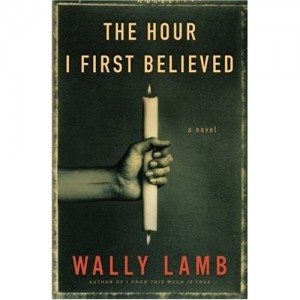 Few books require comparison to a Fyodor Dostoyevsky novel. Yet both the length of the story and the depth of the primary character does resemble works like The Brothers Karamazov.
Few books require comparison to a Fyodor Dostoyevsky novel. Yet both the length of the story and the depth of the primary character does resemble works like The Brothers Karamazov.
While Dostoyevsky wrote in serials and was therefore paid by the word for his work which in turn paid for his gambling addiction, about 500 pages into The Hour I First Believed I began to wonder more about the sanity of the author, Wally Lamb, than the sanity of the main character. In the end, it was a novel that you both couldn’t wait to finish, while at the same time this reader remained convinced that the story should continue forever. It was a painful joy similar to Thanksgiving Day. You can’t possibly eat one more thing and yet you find yourself opening the refrigerator door, more out of compulsion than true hunger for more.
The story is a first person perspective of the main character, Caelum Quirk. Caelum and his wife work at Columbine High School in Littleton, Colorado in 1998-1999. The story takes a dramatic twist when Quirk’s wife is caught in the crossfire during the school shootings. Her life is spared and taken at the same time. Spared in that she isn’t harmed. Taken in that the post-traumatic stress syndrome steals much of the joy and peace from her life.
In an attempt to get away from the tragedy and start over, the Quirks leave Colorado and move into the home of his aunt, who raised him. Left with the family farm and a wife whose mental capacity continues to decline, Caelum begins discovering his real family history. This history is disturbing and freeing as Caelum begins to create a new life for himself in the town he grew up in.
While the story is long and covers a decade, it is still interesting. The title misleads you to believe that Caelum’s tale is a spiritual one. While one could argue this search for history and identity is a spiritual journey the conclusion is not a Christian spiritual journey but perhaps one of existentialism. Lamb seems to paint a superstitious picture of Mrs. Quirks religiosity and the parallel between her discovering peace in Jesus and the end of her life is opaque enough to fail hiding the authors bias.
I almost wish there had been a third person narrative about the author of the story coinciding with the writing of the novel. In the appendix Lamb shares how the novel took nearly a decade to write. For him, it was natural and necassary to weave real world events like the shootings at Columbine and September 11th. Likewise, he threads in a story of a women’s correctional facility founder into his main characters life. In the end, I don’t know if these provided a richness to the story or merely context for a story which otherwise would have lacked depth.
While it is obvious that critics will find this novel brilliant I found it to be tiresome. In the end I felt like it was just 400 pages too long.
Leave a Reply